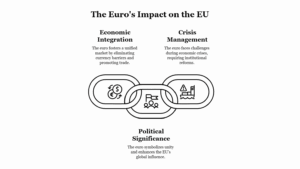Development and Exclusion
Introduction
Development is commonly understood as the process of improving the quality of life through economic growth, technological advancement, improved health care, education, and infrastructure. However, when development benefits are distributed unevenly, it often results in exclusion—the systematic marginalization of certain communities or individuals from accessing the fruits of development. This contradiction between inclusionary goals and exclusionary outcomes forms a central debate in development studies and policy.
Understanding Exclusion in the Context of Development
Social exclusion refers to the process through which individuals or groups are wholly or partially excluded from participating in the social, economic, political, and cultural life of their communities. This exclusion may be based on caste, class, gender, ethnicity, religion, disability, or geographic location.
In many developing nations, including India, large segments of the population—such as Scheduled Castes (SCs), Scheduled Tribes (STs), women, religious minorities, and people with disabilities—face historical and structural disadvantages that limit their access to resources and opportunities. As development policies often prioritize economic growth over social equity, these groups may become further marginalized.
Causes of Exclusion in Developmental Processes
- Market-Driven Growth: When development is guided mainly by market forces, it often favors urban, skilled, and affluent populations while ignoring rural and marginalized communities.
- Inadequate Representation: Policy-making bodies frequently lack adequate representation from disadvantaged groups, leading to policies that do not reflect their needs.
- Displacement and Land Acquisition: Infrastructure projects such as dams, mining, and industrial corridors often lead to the displacement of indigenous populations without proper rehabilitation.
- Digital Divide: The unequal access to digital technology and internet connectivity excludes rural and economically weaker sections from digital development initiatives.
Consequences of Developmental Exclusion
- Widening Inequalities: Disparities in income, education, and healthcare continue to grow.
- Social Unrest: Excluded populations may resist through protests or join insurgent movements, leading to instability.
- Underutilization of Human Capital: A large section of society remains under-educated and underemployed, hindering national progress.
Towards Inclusive Development
Sustainable development must be inclusive, participatory, and equitable. Some steps include:
- Affirmative action and social welfare schemes.
- Participatory governance and representation.
- Investment in rural infrastructure, education, and healthcare.
Example: India’s Mahatma Gandhi National Rural Employment Guarantee Act (MGNREGA) is a significant policy aimed at reducing rural exclusion by providing employment guarantees.
Conclusion
Development that leads to exclusion defeats the very purpose of progress. For development to be meaningful, it must be inclusive, ensuring that the benefits reach the most vulnerable. Only then can we achieve a just, equitable, and sustainable society.
Vocabulary Builder
- Marginalization = Pushing a group to the edge of society, limiting their access to resources.
- Equity = Fairness in treatment and opportunity.
- Disparity = A great difference or inequality.
- Participatory = Involving all stakeholders in decision-making.
- Affirmative action = Policies that help historically disadvantaged groups.







Leave a Reply